Welcome to the fascinating world of different types of philodendron! These captivating houseplants, with their wide array of shapes, sizes, and colors, can breathe life and vibrancy into any indoor space. From the lush heart-shaped leaves of the Heartleaf Philodendron to the striking silver foliage of the Silver Sword Philodendron, there is a perfect philodendron for everyone.
Are you ready to explore the diverse world of different types of philodendron and discover the variety that will captivate your heart and enhance your home?
Short Summary
Philodendrons are popular and diverse houseplants that come in a variety of shapes, colors, and sizes.
Proper care for philodendrons requires providing bright indirect light, consistent watering & well-draining soil.
Regular inspection is key to preventing pests & diseases while safety precautions must be taken when handling pesticides or fungicides.
Understanding Philodendrons

Philodendrons, native to Central and South America, are a popular and diverse houseplant genus, known for their large and glossy leaves. The beauty of philodendrons lies in their astonishing variety, with leaves that come in all shapes and sizes, from heart-shaped to lobed and finger-like.
This versatility and adaptability make philodendrons an excellent choice for both beginners and experts looking to expand their houseplant collection.
In their natural habitat, philodendrons thrive in rainforests, where they bask in a dappled light environment. This preference for indirect light makes them perfect for indoor settings, where they can bring a touch of tropical splendor to any room.
With at least 25 philodendron varieties referenced in our source, you'll have no trouble finding the perfect addition to your home.
Popular Philodendron Varieties

Some of the most popular philodendron varieties include the Heartleaf Philodendron, Velvet Leaf Philodendron, Lacy Tree Philodendron, and Silver Sword Philodendron. These plants are known for their ease of care and ability to thrive in low light environments, making them a fantastic choice for any indoor space.
Let's delve deeper into these popular varieties and discover what makes them so sought after.
Heartleaf Philodendron
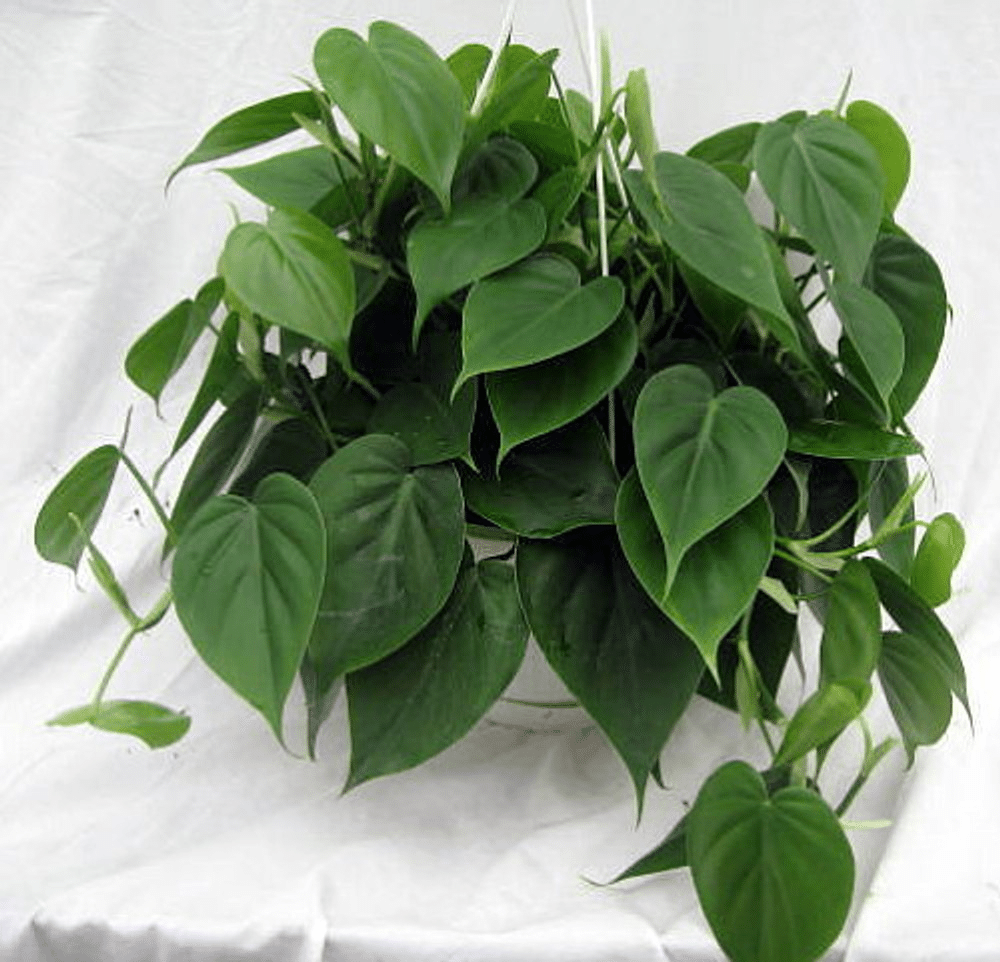
The Heartleaf Philodendron, or philodendron hederaceum, is a charming vining plant adorned with small, heart-shaped, jade green leaves. Its cascading growth habit makes it an ideal option for hanging baskets and planters, adding a touch of elegance and romance to your living space.
The Heartleaf Philodendron's vibrant color can be maintained by providing it with bright, indirect light. Caring for your Heartleaf Philodendron is quite simple. Place it in an area that receives bright to medium indirect light and water it once the soil is dry.
With its undemanding care requirements and enchanting appearance, the Heartleaf Philodendron is a delightful addition to any home.
Velvet Leaf Philodendron

The Velvet Leaf Philodendron, with its large, color-changing leaves, is a captivating and unique variety of philodendron. The silvery lance-shaped foliage of this plant, combined with its burgundy almost black leaves and deep wine red stems, creates a stunning visual display. Displaying your Velvet Leaf Philodendron in a hanging basket or growing it on a trellis will showcase its beauty to the fullest.
To keep your Velvet Leaf Philodendron healthy and thriving, place it in a humid environment, such as the kitchen or bathroom. This will ensure that the velvety texture of its leaves remains at its best.
Lacy Tree Philodendron

The Lacy Tree Philodendron, also known as Philodendron Selloum or Split-Leaf Philodendron, features wide, lobed dark green leaves and robust green stems. This large variety of philodendron can make a bold statement in any room, with its glossy, oval green leaves that can reach up to 20 inches in length.
For optimal growth, Lacy Tree Philodendrons require bright, indirect sunlight, regulated temperature, and a humid environment. Professional trimming may be beneficial if the plant becomes too large to manage, ensuring that your Lacy Tree Philodendron remains a stunning focal point in your home.
Silver Sword Philodendron
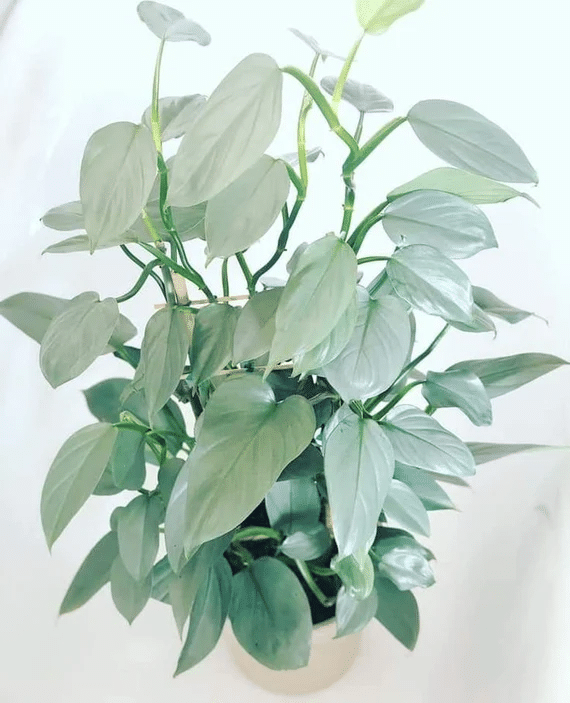
The Silver Sword Philodendron, also known as silver leaf philodendron, is characterized by silvery lance-shaped foliage, burgundy almost black leaves, and deep wine red stems. Its vine-like growth and heart-shaped leaves make it an eye-catching addition to your indoor plant collection. The Silver Sword Philodendron requires bright, indirect light and moist, well-drained soil for successful growth.
Displaying your Silver Sword Philodendron can be done in a variety of ways. Providing it with structural support or suspending it in a hanging basket will allow the plant to showcase its stunning foliage to the fullest extent.
Rare and Unique Philodendron Types

For those who love the unusual and exotic, rare and unique philodendron types such as Philodendron Gloriosum, Birkin, and Prince of Orange are perfect choices. These plants not only boast striking colors and shapes, but also serve as great conversation starters for plant enthusiasts.
Let's explore these rare philodendron varieties in more detail.
Philodendron Gloriosum
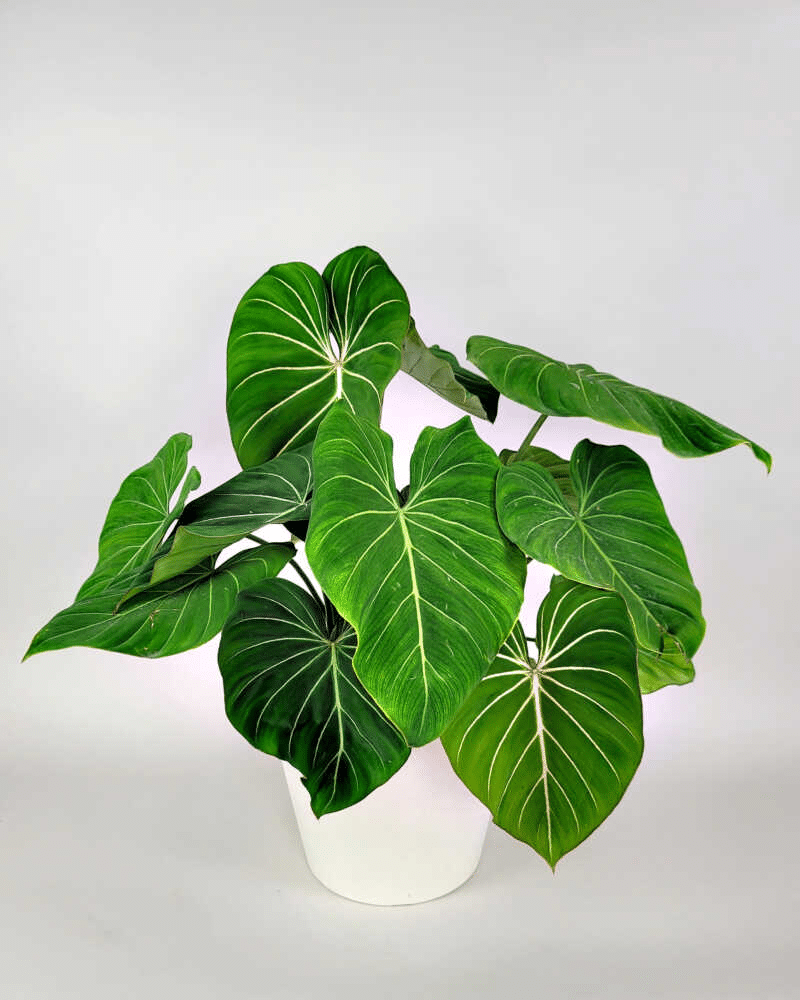
Philodendron Gloriosum is a stunning variety with deeply lobed leaves that possess a distinctive, triangular-like shape resembling that of a reindeer or butterfly. Its smooth, glossy green leaves with white, pale pink, or green veins create a mesmerizing visual effect. To ensure the health and vibrancy of your Philodendron Gloriosum, place it in an area with bright, indirect light, high humidity, and regular watering.
As your Philodendron Gloriosum grows, its leaves will continue to captivate and enchant, making it an extraordinary addition to your indoor plant collection.
Philodendron Birkin

The Philodendron Birkin features medium-sized deep green leaves with white pinstripes and variegation, and a climbing growth habit. Its slow-growing nature makes it an exquisite plant for any indoor space. The distinctive pin stripes on the heart-shaped leaves of the Philodendron Birkin originate from the center and extend to the edges, adding visual interest and flair.
To care for your Philodendron Birkin, place it in an area that receives bright, indirect sunlight and provide it with moist, well-draining soil containing organic matter, such as peat moss, for optimal water drainage.
Prince of Orange Philodendron
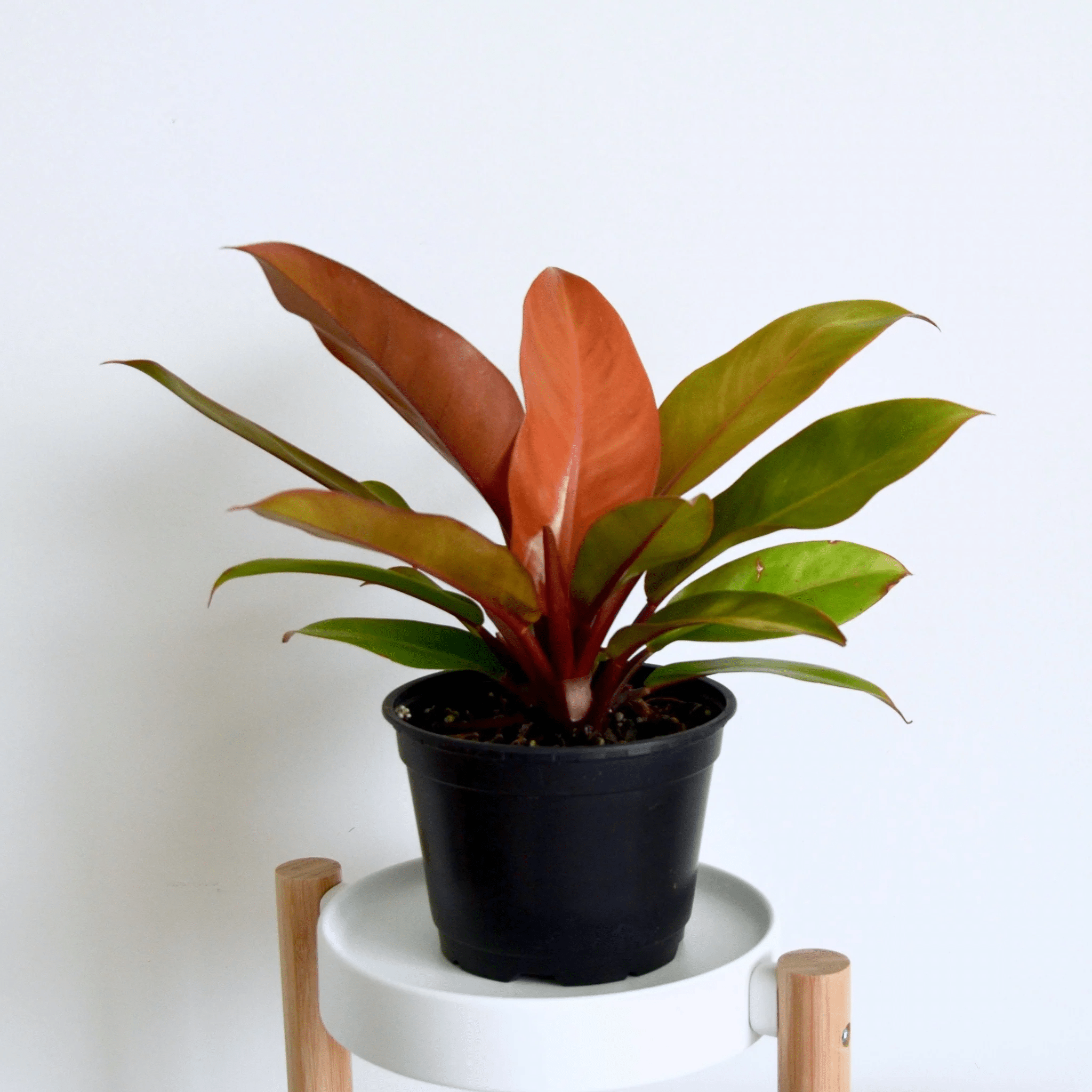
The Philodendron Prince of Orange is a more slender and vivid version of the Philodendron Prince Albert, featuring narrower and more elongated foliage. Its leaf color begins as orange or reddish-orange and gradually transitions to light green as the plant matures.
The striking foliage of the Prince of Orange Philodendron displays bright yellow and soft orange colors, gradually shifting to copper-orange and red as it matures.
To maintain the vibrant colors of your Prince of Orange Philodendron, ensure it is placed in an area with bright, indirect light. This captivating philodendron variety is sure to be a showstopper in your indoor garden.
Trailing and Climbing Philodendrons

Trailing and climbing philodendrons, such as the Blushing Philodendron and Dark Green Climbing Philodendron, are perfect for those who love the cascading effect of trailing plants or the upward growth of climbing plants.
These varieties are ideal for hanging baskets or tall shelves, adding vertical interest to your indoor plant collection.
Blushing Philodendron

The Blushing Philodendron, or Philodendron erubescens, is an evergreen climber characterized by its glossy, heart-shaped leaves and wine-colored stems. Its deep green foliage and vibrant stems make it a visually appealing addition to any indoor space.
To care for your Blushing Philodendron, provide it with bright, indirect light and water it three times a week, ensuring the soil remains consistently moist but not overly saturated.
To train your Blushing Philodendron to climb indoors, a moss pole or trellis is recommended. This will not only support its growth, but also create a stunning visual display as the plant climbs upwards.
Dark Green Climbing Philodendron
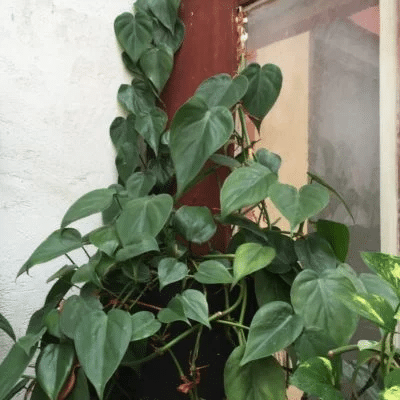
The Dark Green Climbing Philodendron is a variety of philodendron plants characterized by their elongated, dark green leaves, which can reach up to three feet in length. This climbing plant utilizes aerial roots for support while ascending, making it an interesting and eye-catching addition to your indoor garden.
To care for your Dark Green Climbing Philodendron, provide it with bright, indirect light, and ensure that the soil remains moist but not overly saturated.
If you notice any common issues, such as pests or diseases, on your Dark Green Climbing Philodendron, address them by inspecting the plant regularly and taking immediate action upon seeing any signs of infestation or disease.
Caring for Your Philodendron
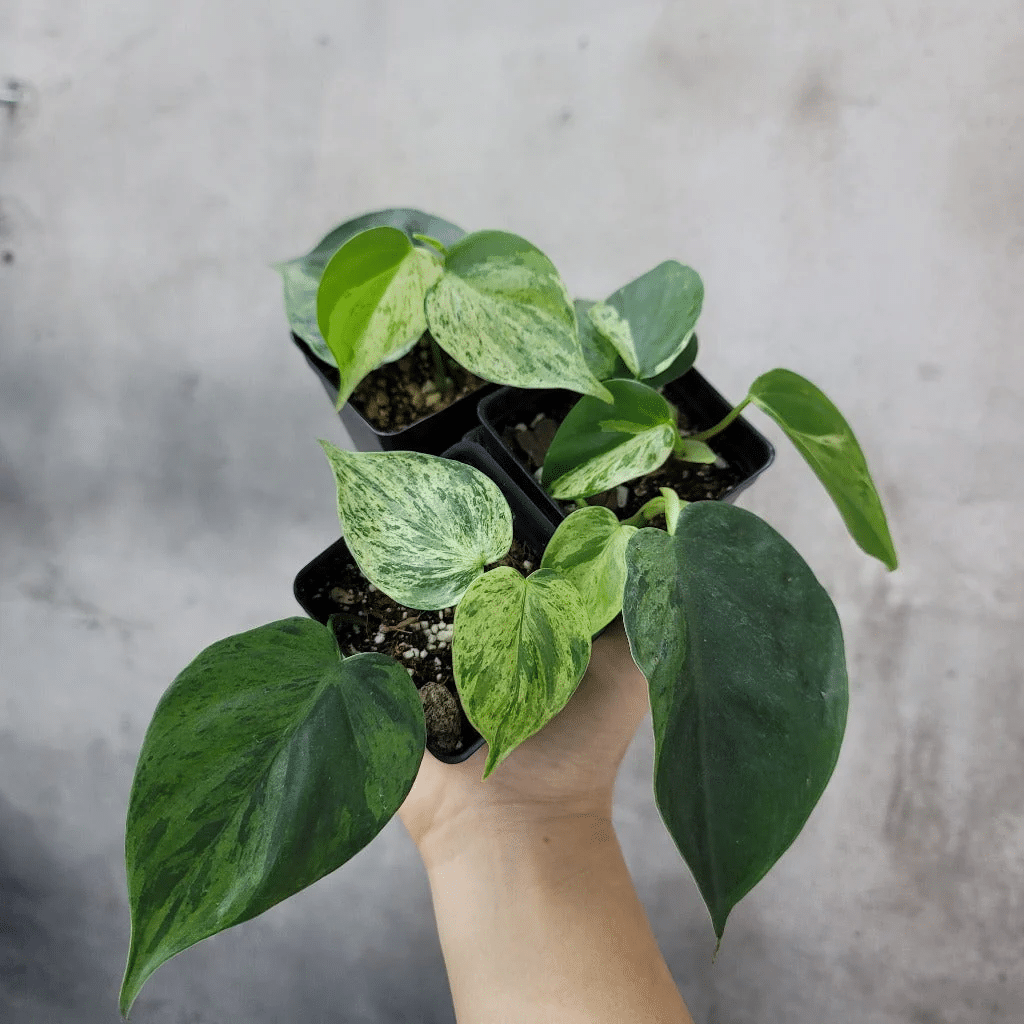
Caring for your philodendron is a breeze with the right knowledge. Providing bright, indirect light, consistent watering, and well-draining soil will ensure that your philodendron thrives and remains a healthy addition to your indoor garden.
Now let's discuss the specifics of light, temperature, watering, and soil requirements for your philodendron.
Light and Temperature
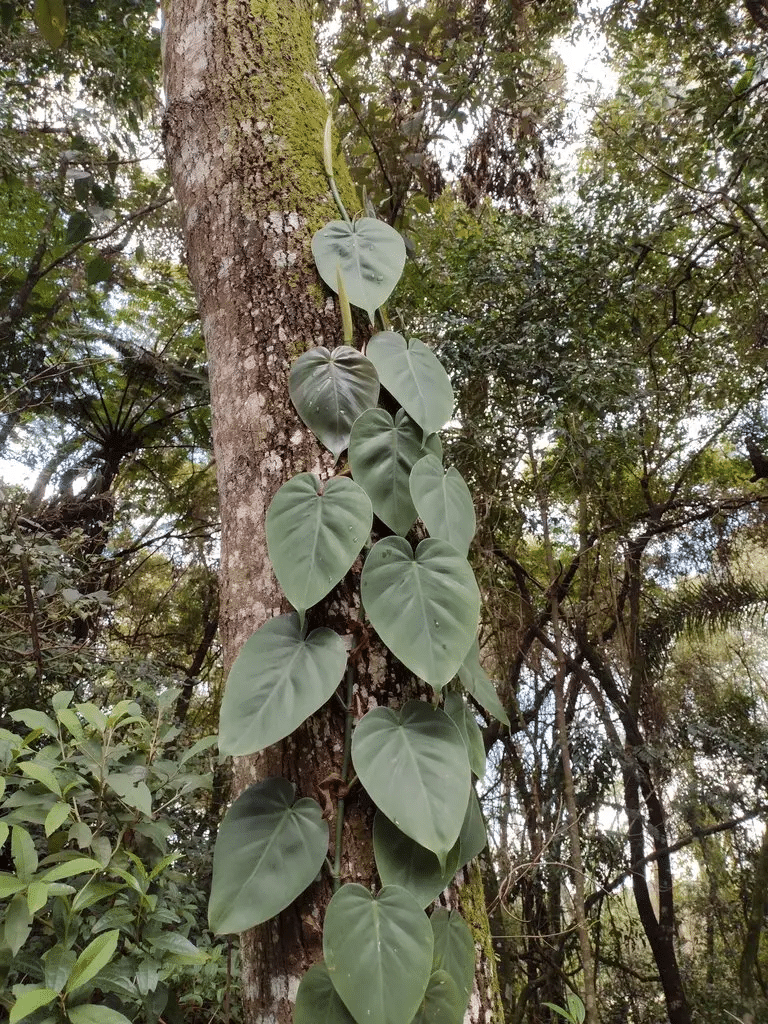
Philodendrons require bright, indirect light for approximately 4-6 hours daily to maintain their vibrant colors. Direct sunlight can cause scorching and damage to the leaves, so it's essential to find a spot with the right amount of light.
In addition to light, philodendrons thrive in temperatures between 65-78°F during the day and approximately 60°F during the night. Providing the right balance of light and temperature will ensure your philodendron stays healthy and attractive.
Watering and Soil
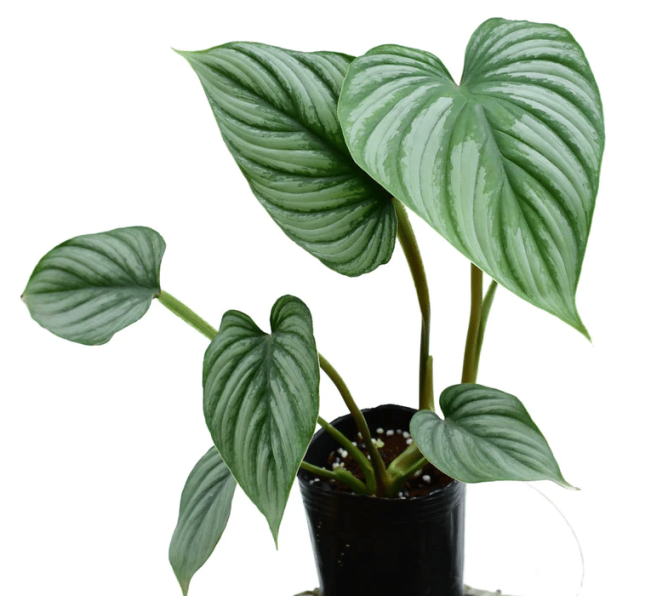
Watering your philodendron correctly is crucial for its overall health. Philodendrons require well-drained soil that is kept moist but not saturated. It is recommended to water once a week during the spring and summer seasons, allowing the soil to dry between waterings to avoid overwatering and root rot.
The right soil conditions are also essential for your philodendron's growth, with well-drained soil being the key to a healthy plant.
Propagating Philodendrons

Propagating philodendrons is an easy and rewarding task. You can propagate your philodendron through stem cuttings or division, depending on your preference.
To propagate through stem cuttings, simply cut a healthy stem with at least one leaf and root it in either water or potting soil.
Air layering is another method, which involves creating a new plant from a branch while it is still connected to the parent plant.
Whichever method you choose, propagating your philodendron is a great way to expand your collection and share the beauty of these plants with friends and family.
Common Philodendron Problems and Solutions
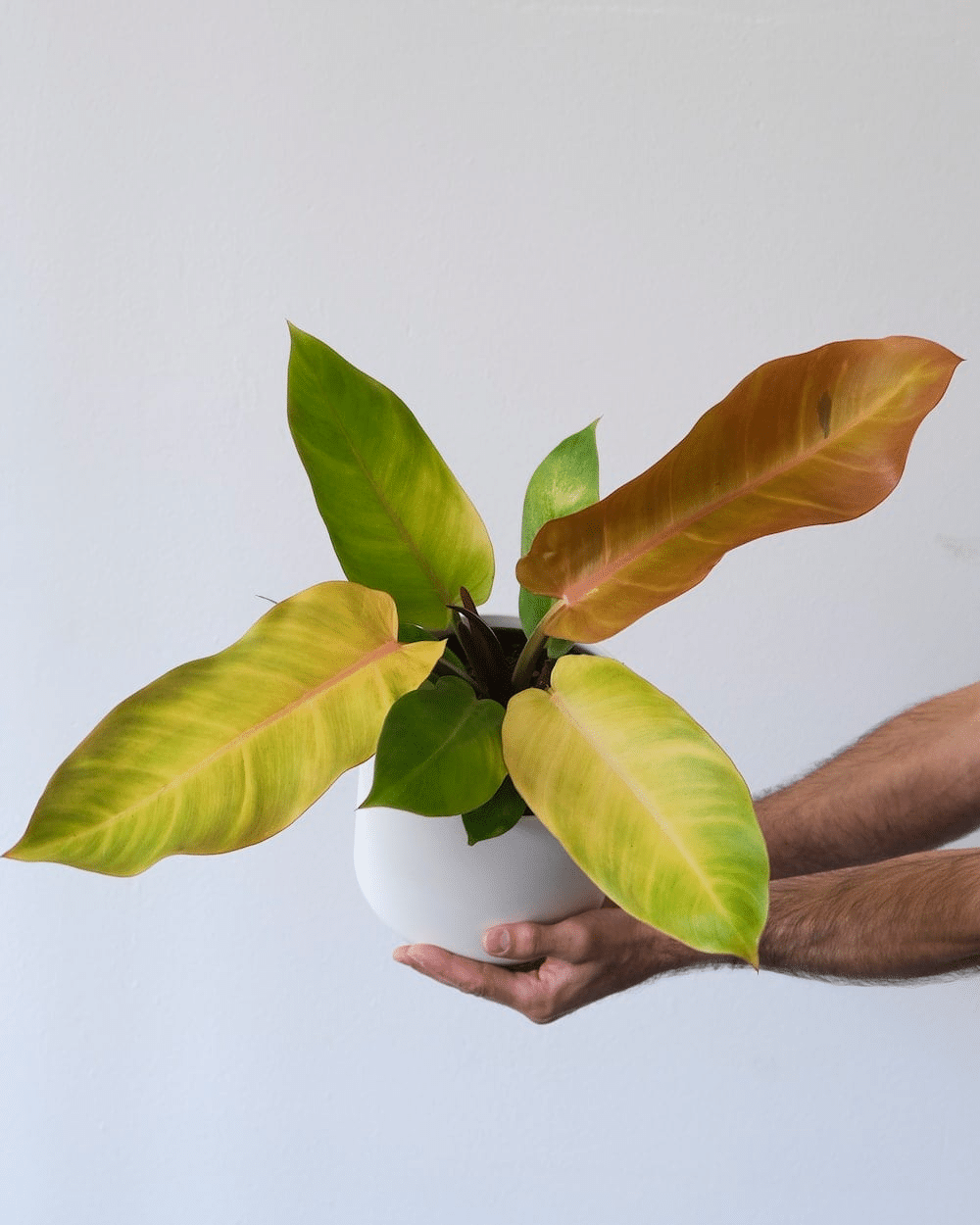
While philodendrons are generally easy to care for, they may occasionally experience issues such as pests, diseases, yellowing leaves, and overwatering.
Let's explore some of these common problems and their respective solutions to ensure your philodendron remains healthy and vibrant.
Pests and Diseases
Philodendrons can be susceptible to pests such as spider mites, mealybugs, scale insects, aphids, fungus gnats, and thrips, as well as diseases like bacterial leaf spot and fungal leaf spot.
Regularly inspecting your plant for any signs of pests or diseases is crucial in maintaining its health. Upon discovering these issues, take immediate action by removing affected leaves, utilizing insecticidal soap, or introducing beneficial insects.
When addressing pests and diseases, it is important to practice safety precautions, such as wearing gloves and a mask when handling pesticides or fungicides. Always follow the instructions on the label and keep the product away from children and pets.
Yellowing Leaves
Yellowing leaves in philodendrons may be caused by a variety of factors, including overwatering, underwatering, pests, nutrient deficiencies, temperature stress, and light conditions. To identify the cause of yellowing leaves, examine your plant for any signs of these issues.
Once the source has been identified, adjust your watering, fertilization, and light conditions as needed to resolve the problem and prevent future occurrences.
Philodendron Safety Tips
While philodendrons are beautiful and captivating plants, it is essential to remember that they are toxic if ingested. Keep your philodendrons away from pets and children to avoid accidental ingestion and ensure the safety of your loved ones.
In addition to this, proper handling of pesticides and fungicides is crucial when treating pests and diseases. Wear gloves and a mask and follow the instructions on the label to minimize any potential risks.
With these safety tips in mind, you can enjoy the beauty and intrigue of your philodendron collection with peace of mind.
Summary
From the classic heartleaf to the rare and unique Prince of Orange, philodendrons offer a diverse and captivating array of options for any indoor space. With their striking colors, shapes, and ease of care, these plants can breathe life and vibrancy into your home.
By following the care tips, propagation methods, and safety precautions discussed in this blog post, you can ensure that your philodendron collection thrives and remains a healthy, captivating addition to your indoor garden.
We hope this exploration of the world of philodendrons has inspired you to discover the perfect variety for your home and enhance your living space with the captivating beauty of these incredible plants.
Frequently Asked Questions
How many different types of Philodendron plants are there?
Philodendron plants are part of the Araceae family, and there are over 450 known species of this flowering plant. Native to tropical America, these plants are often found growing on other plants or vines before eventually becoming an epiphyte.
With many species yet to be discovered, it is likely that this number could grow in the future.
Is a Monstera a Philodendron?
No, Monstera is not a Philodendron. While they both belong to the Araceae family of plants, Monstera is closely related to peace lilies, while philodendrons are closely related to pothos, the most popular houseplant in the world.
Which Philodendron can take full sun?
Philodendron selloum is a reliable species for full sun areas, as it can tolerate an amount of direct sunlight and needs well-drained soil to thrive.
Therefore, the Philodendron that can take full sun is the Philodendron selloum.


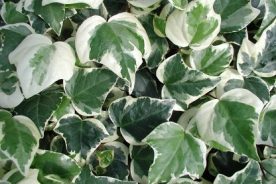
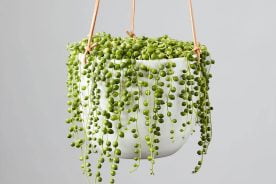

No Comments